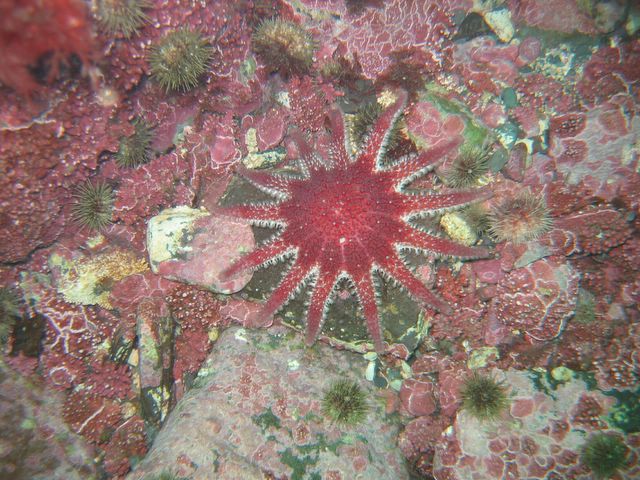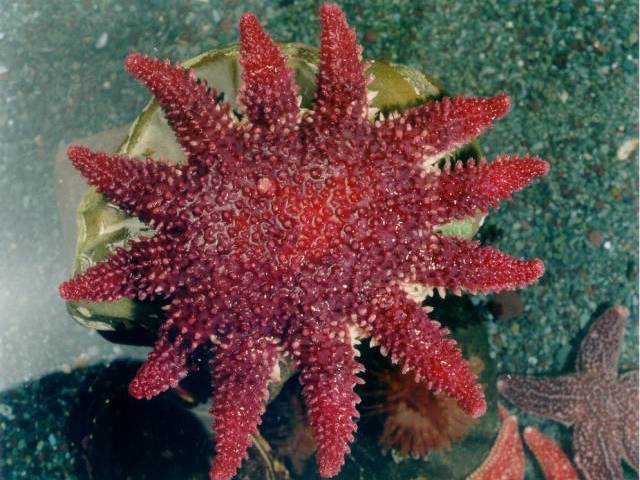Spiny Sunstar

Scientific name: Crossaster papposus
Phylum: Echinodermata
Class : Asteroidea
Description: Spiny Sunstars are coarsely bristled with 8-14 arms and boldly marked in concentric hands of red, pink and white, with sizes up to 18cm in diameter.
Distribution: They are found Arctic or sub-arctic south to the Gulf of Maine , in sub-tidal to deep water about 120ft. or greater.
Locomotion: They use “tube feet” which are connected to ampullae to move. When ampullae contract, fluid is forced into the tube feet, extending them; small muscles direct the tube feet in one direction or another. Sea stars migrate to deeper water in winter.
Food gathering: Very predatory sea star which feeds on other starfish, sea urchins, anemones and bivalve molluscs.. They use tube feet to hold shells of bivalves like mussels, clams, and oysters; they also feed on snails and limpets and are carnivores on other sea stars and sea cucumbers. The everted stomach slips into the shell of prey and digestive enzymes are released in order to digest the soft parts of the prey.
Gas exchange:Gas exchange occurs across the podia and special out-pocketing of body wall. The currents move in opposite directions, creating a countercurrent and maximizing exchanges gradients.
Reproduction The sexes are separated, with eggs being fertilized externally. They are capable of regenerating lost or damaged arms.
Interesting facts: Northern Sea stars can have strong avoidance reactions to Spiny Sunstars, one of their predators.
Images
 |
 |
 |
 |
OSC Research
Mercier Lab - Research on reproduction, larval development, ecology and growth is carried out on a wide variety of marine invertebrates.